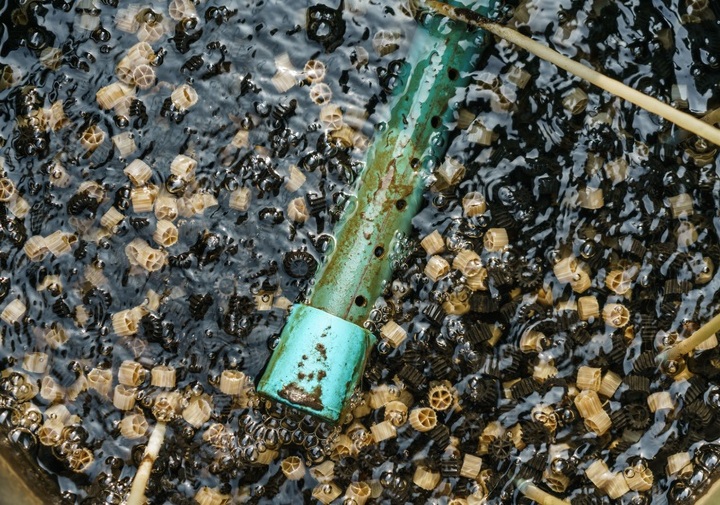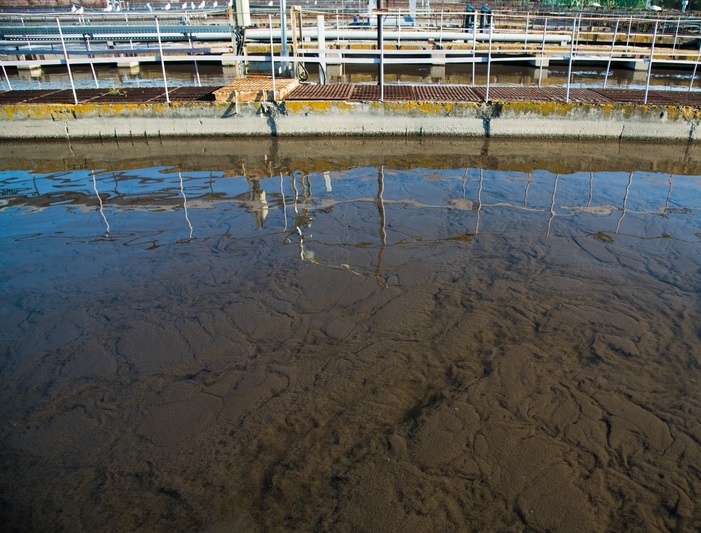
 Data Structure
Data Structure Networking
Networking RDBMS
RDBMS Operating System
Operating System Java
Java MS Excel
MS Excel iOS
iOS HTML
HTML CSS
CSS Android
Android Python
Python C Programming
C Programming C++
C++ C#
C# MongoDB
MongoDB MySQL
MySQL Javascript
Javascript PHP
PHP
- Selected Reading
- UPSC IAS Exams Notes
- Developer's Best Practices
- Questions and Answers
- Effective Resume Writing
- HR Interview Questions
- Computer Glossary
- Who is Who
Moving Bed Biofilm Bioreactor
Introduction
A moving bed biofilm reactor (MBBR) is a type of biological wastewater treatment technology that employs a unique and innovative method for removing organic pollutants and nitrogenous compounds from wastewater.
This technology is based on the use of a suspended biomass carrier, which is referred to as "biofilm media" that serves as a substrate for the attachment and growth of bacteria and other microorganisms responsible for biodegrading and converting the organic and inorganic pollutants present in the wastewater into less harmful substances.

Working Principle of MBBR
The MBBR technology employs a unique method of wastewater treatment that is based on the use of biofilm media, which is a type of synthetic polymer material with a high surface area-to-volume ratio.
This media is designed to provide a substrate for the growth and attachment of microorganisms responsible for the biodegradation of organic and inorganic pollutants present in the wastewater.
The wastewater to be treated is pumped into the reactor, where it comes into contact with the biofilm media, which is suspended in the water column.
As the wastewater flows through the reactor, the microorganisms attached to the biofilm media utilize the pollutants present in the wastewater as a source of energy and carbon, converting them into less harmful substances such as carbon dioxide and water.
The biofilm media used in the MBBR technology is designed to have a specific gravity less than that of water, making it buoyant and allowing it to move freely within the reactor.
The microorganisms attached to the biofilm media are capable of biodegrading a wide range of organic and inorganic pollutants, including ammonia, nitrite, nitrate, and phosphate, making the MBBR technology highly efficient in the removal of nitrogenous compounds from wastewater.
Design Considerations for MBBR
The following are some of the key design considerations for an MBBR system.
Biofilm Media
The biofilm media used in the MBBR system is a critical component that determines the treatment efficiency of the system. The biofilm media should have a high surface area-to-volume ratio to provide ample space for the attachment and growth of microorganisms responsible for biodegradation. The biofilm media should also be resistant to mechanical and biological degradation to ensure long-term performance.
Hydraulic Retention Time (HRT)
The hydraulic retention time (HRT) is the amount of time the wastewater spends in the reactor, and it is a critical design parameter that determines the treatment efficiency of the system. The HRT is dependent on several factors, including the flow rate of the wastewater, the volume of the reactor, and the desired treatment objectives.
Surface Loading Rate (SLR)
The surface loading rate (SLR) is the amount of wastewater that can be treated per unit surface area of the biofilm media. The SLR is dependent on several factors, including the characteristics of the wastewater to be treated, the design of the biofilm media, and the desired treatment objectives.
A higher SLR provides more contact time between the wastewater and the biofilm media, resulting in higher treatment efficiency. However, a higher SLR may also result in higher shear forces on the biofilm media, which can lead to mechanical degradation and loss of treatment efficiency. Therefore, the SLR should be optimized based on the specific wastewater characteristics and treatment objectives.
Aeration System
The aeration system is an essential component of the MBBR system, as it provides the oxygen required by the microorganisms attached to the biofilm media for biodegradation. The aeration system should be designed to provide sufficient oxygen to the microorganisms without causing excessive turbulence that can lead to mechanical degradation of the biofilm media.
The choice of aeration system is dependent on several factors, including the reactor size, the desired treatment objectives, and the available energy source. Common types of aeration systems used in MBBR systems include diffused aeration, surface aeration, and mechanical aeration.
Advantages of MBBR
The MBBR technology offers several advantages over traditional wastewater treatment technologies, including ?
High Treatment Efficiency
The MBBR technology is highly efficient in the removal of organic pollutants and nitrogenous compounds from wastewater, resulting in high-quality effluent that meets regulatory standards.
Flexibility
The MBBR technology is flexible and can be adapted to different wastewater treatment applications, including industrial and municipal wastewater treatment.
Simple Design
The MBBR technology has a simple design that requires minimal maintenance, making it easy to operate and maintain.
Reduced Footprint
The MBBR technology requires a smaller footprint compared to traditional wastewater treatment technologies, making it ideal for applications where space is limited.
Robustness
The MBBR technology is robust and can withstand fluctuations in wastewater flow rate and composition, making it suitable for applications with varying wastewater characteristics.
Energy Efficiency
The MBBR technology is energy-efficient, as it requires less energy for aeration compared to traditional wastewater treatment technologies.
Disadvantages of MBBR
Despite the advantages of the MBBR technology, there are also some disadvantages to consider, including ?
High Capital Cost
The MBBR technology has a higher capital cost compared to traditional wastewater treatment technologies, mainly due to the cost of the biofilm media.
Sensitivity to Temperature
The MBBR technology is sensitive to temperature, and the treatment efficiency may decrease at low temperatures, requiring additional heating.
Sensitivity to Shock Loads
The MBBR technology is sensitive to shock loads, and sudden changes in wastewater composition or flow rate may affect the treatment efficiency.
Media Clogging
The biofilm media used in the MBBR system may clog over time, requiring periodic cleaning or replacement.
Applications of MBBR
The MBBR technology has a wide range of applications in the field of wastewater treatment, including ?
Municipal Wastewater Treatment
The MBBR technology is used for the treatment of municipal wastewater in small and medium-sized communities, where space is limited and traditional wastewater treatment technologies may not be feasible.

Industrial Wastewater Treatment
The MBBR technology is used for the treatment of industrial wastewater from a wide range of industries, including food and beverage, chemical, and pharmaceutical industries.
Land-Based Aquaculture
The MBBR technology is used for the treatment of wastewater from land-based aquaculture systems, such as fish farms, to reduce the concentration of nitrogenous compounds and organic matter before discharge into the environment.
Mariculture
The MBBR technology is used for the treatment of wastewater from mariculture systems, such as fish and shrimp ponds, to reduce the concentration of nitrogenous compounds and organic matter before discharge into the environment.
Drinking Water Treatment
The MBBR technology can be used as a pre-treatment step for the removal of organic matter and nitrogenous compounds from raw water sources before further treatment for drinking water production.
Conclusion
The Moving Bed Biofilm Reactor (MBBR) is a highly efficient and flexible wastewater treatment technology that has gained widespread acceptance in recent years.
The MBBR technology is ideal for applications where space is limited, and traditional wastewater treatment technologies may not be feasible.
Overall, the MBBR technology is a promising wastewater treatment technology that can provide high-quality effluent and meet the regulatory standards for effluent discharge. With continued research and development, the MBBR technology is expected to become more cost-effective and widely adopted in the future.

